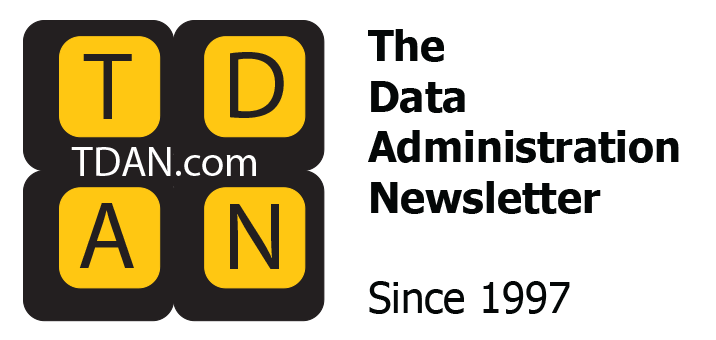
An unlikely combination of events inspired this column: I’m on day 271 of learning Chinese (after being challenged by my son), and I’ve been binge-watching MIT lectures on quantum mechanics. Somewhere between wrestling tones in Mandarin and wrestling Hilbert spaces in quantum physics, it struck me: These two pursuits have something in common with enterprise data. They’re all about meaning, context, and the stubborn refusal of reality to fit neatly into our categories.
So, welcome to a two-part series on what data leaders can learn from quantum information theory (QIT). In this first installment, we’ll use quantum principles as metaphors for classic data management challenges. In next month’s column, we’ll pivot from metaphor to practice and ask: If quantum mechanics isn’t the answer to our dream of “one instance of data with many valid representations,” what is? (Spoiler: Think matrices and semantic models, not qubits.)
A Crash Course in Quantum Information Theory
Classical information theory, pioneered by Claude Shannon, told us how to measure uncertainty (entropy) and how to transmit data efficiently through noisy channels. Quantum information theory takes that foundation into the strange domain of quantum mechanics:
- Qubits replace bits, living in superpositions of 0 and 1.
- Entanglement ties different particles together in ways that defy classical intuition.
- The no-cloning theorem prevents perfect copies of quantum states.
- Measurement “collapses” a state into a single outcome.
Physicists use these principles to explore quantum computing, secure cryptography, and even whether or not space-time itself might be “woven” from entanglement.
Now, let’s put on our data hats and see what happens when these principles are re-imagined through a data management lens.
Superposition and Metadata Ambiguity
In quantum mechanics, a qubit can exist in a superposition — both 0 and 1 at once — until it is measured, at which point it collapses into a definite state. That’s what makes quantum physics feel so strange: Reality seems undecided until you look.
Enterprise data often lives in the same kind of limbo. A field can carry multiple potential meanings until context “measures” it:
- Is that date the order date, ship date, or invoice date?
- Is “Customer ID” the system’s internal key, or an external reference from a partner?
- Is “Status = Active” about the customer’s account or their subscription?
Without metadata, each of these remains in semantic superposition — many meanings at once, waiting to collapse. Metadata is our measurement basis: It provides the context that resolves ambiguity into meaning.
When metadata is missing or poorly defined, different teams collapse the same field in various ways, leading to inconsistent reports and endless debates. A well-documented data catalog, on the other hand, acts like a calibrated measurement device: everyone sees the same state, and trust is preserved.
Think of metadata as the device you use to measure a blurry object. Without it, people are left to guess, and each gets a different answer.
Entanglement and Data Lineage
Entanglement is the hallmark of quantum weirdness: Two particles become so correlated that you can’t describe one without the other. Physicists really do call it “weirdness,” because quantum states don’t behave like anything in our everyday world — they can exist in many possibilities at once, instantly influence each other across space, and then vanish into a single outcome the moment you try to look.
Now, is it a leap to compare that to data lineage? Of course. Quantum fields don’t govern lineage; it’s just metadata. But as a metaphor, it’s surprisingly sticky. In the enterprise, lineage has its own “spooky action at a distance.” Your downstream sales report is invisibly entangled with the upstream CRM system. Changing one field at the source can shift the entire downstream analysis, sometimes in unexpected ways.
So, while entanglement and lineage aren’t the same thing, the analogy works because it highlights the hidden dependencies we often forget. The lesson? We must respect the invisible connections that lineage represents. Ignoring them leads to surprises in reporting, compliance, and trust.
No-Cloning and the Golden Record
Physics teaches us that you can’t make a perfect copy of an unknown quantum state — this is the famous no-cloning theorem. Once you try, information is lost or altered.
Enterprise data leaders face a parallel challenge. We often talk about the “golden record” as a single version of the truth, but it’s not created by copying data out of source systems. Instead, MDM composes it: It takes attributes from multiple participating systems, reconciles conflicts, and produces the best agreed-upon representation of a customer, product, or location.
Some systems may contribute inputs, others may consume the composite back, and still others may simply keep their local copy. That’s fine — the golden record is not a clone, it’s a stewarded composite that becomes the authoritative reference point.
Without formal MDM, the “truth” about a customer or product often lives in tribal knowledge — which field in which system is most reliable. That’s the informal golden record, and it collapses when experts leave or disagree.
With MDM, the enterprise externalizes that knowledge into process and governance. It doesn’t deliver perfection, but it creates a composite version of truth that’s transparent, reconcilable, and trustworthy.
The lesson? In both physics and data, don’t chase flawless copies. Instead, accept that reconciliation is the only path to coherence. The golden record isn’t a duplicate; it’s the carefully managed hologram of truth we agree to operate on.
Error Correction and Data Quality
In quantum physics, fragile states are constantly threatened by noise and interference. To keep computations reliable, scientists use quantum error correction, which spreads information across multiple qubits so that even if one is corrupted, the system can still recover.
Enterprise data faces the same challenge. Noise creeps in through typos, mismatched codes, missing values, or system glitches. Without safeguards, that noise propagates downstream, eroding trust and making analysis unreliable.
Our equivalent of quantum error correction is data quality management, which includes validation rules, stewardship checks, anomaly detection, and redundancy across systems. The idea isn’t that we eliminate all noise — that’s impossible — but that we distribute meaning in such a way that no single bad value can wreck the enterprise’s ability to reason about its data.
Quantum Channels and Data Pipelines
In quantum physics, information moves through quantum channels — delicate pathways where signals can be corrupted by noise and decoherence (the gradual loss of quantum state). Preserving fidelity in these channels is one of the significant engineering challenges of building a real quantum computer.
Enterprise data has its own version of decoherence: the data pipeline. As information flows from source systems through staging, transformation, and integration, it’s vulnerable to errors, mis-mappings, and undocumented changes. Each hop is a chance for the signal to degrade.
Just as physicists design quantum channels with shielding, error correction, and careful calibration, data leaders must design pipelines with lineage tracking, logging, and validation rules. The goal isn’t to stop movement, but to ensure that what arrives downstream faithfully represents what was upstream.
Without that rigor, pipelines become “black boxes” where data loses context and trust erodes. With it, they function more like transparent conduits, preserving meaning even as data moves across complex architectures.
Holography and Data Modeling
One of the most radical ideas in physics is the holographic principle: The notion that everything happening inside a three-dimensional volume of space could, in theory, be fully described on its two-dimensional boundary. Imagine a universe where all the information inside is encoded on the surface outside, a cosmic hologram. It’s strange, but it’s one of the most serious ideas in modern theoretical physics.
Data works in a surprisingly similar way. Our business reality is messy, multidimensional, and constantly shifting. Yet every dataset carries a model, whether or not anyone has drawn it. A CSV file, for example, still implies structure: Column 1 is an ID, column 2 a date, column 3 an amount. Relationships, constraints, and context are always present — the question is whether they are explicit and governed or implicit and left to be guessed at.
Often, the “implicit hologram” lives in people’s heads — the tribal knowledge of how systems connect, what attributes mean, and which numbers to trust. That works until those people move on or disagree. Formal data models — entity-relationship diagrams, star schemas, and dimensional models — are our way of externalizing that hologram, making the implicit explicit. Done well, they enable us to project essential structure and meaning from a complex world into a form that we can query, analyze, and govern.
So What? Lessons for Data Leaders
Why play with these metaphors? Because they remind us of more profound truths:
- Information is physical: Whether in qubits or rows and columns, it has constraints.
- Context is everything: Metadata and measurement determine meaning.
- Connections matter: Lineage and entanglement both tell us the whole story lies in the relationships.
- Perfection is a myth: Just as quantum states can’t be perfectly cloned, neither can enterprise records.
In short, quantum information theory gives us a fresh vocabulary for the challenges of data management.
Coming in Part 2: We’ll ask the next big question: If qubits can’t give us a single instance of data with many valid representations, what can? The answer lies not in quantum weirdness but in the humble but powerful world of matrix algebra and semantic models.
